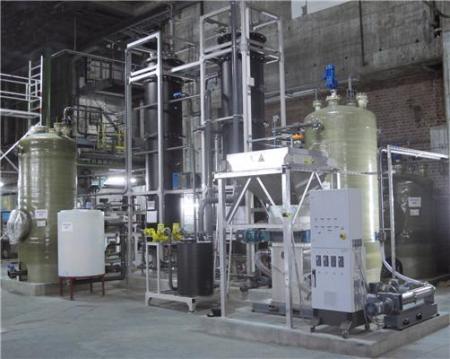Researchers from the Fraunhofer Institute for Interfacial Engineering and Biotechnology (IGB) in Stuttgart have established a new pilot plant that produces biogas or methane from food waste by fermentation process. The pilot facility is scheduled to begin operation in early 2012.
 This plant in Stuttgart makes biogas out of waste from wholesale markets.
This plant in Stuttgart makes biogas out of waste from wholesale markets.
At present, a large number of drivers have switched over to natural gas as an alternative to diesel or gasoline, as the exhaust emissions produced by natural gas contains less CO2 and free from dirt. However, the major issue is reserves are limited as natural gas is also a fossil fuel. Currently, Fraunhofer researchers have found an alternative solution to get the natural gas from food waste such as overripe cherries, brown bananas and mushy tomatoes that are produced by canteens, university cafeterias and wholesale markets. The food waste thus produced will be fermented to produce methane, which can later be compressed into high-pressure cylinders for use as fuel.
The facility employs several microorganisms to produce biogas from waste, which includes lowest lignocellulose content and high water. However, specific composition of waste that varies each day presents a challenge to the researchers. To address this, the waste is accumulated in many storage tanks, where a range of factors are automatically calculated, including the pH value. The plant is equipped with a specially designed management system to determine the correct balance of waste from various containers that need to be mixed and fed into the microorganisms.
Another major benefit of the Stuttgart plant is that the methane, the liquid filtrate and the sludgy residue can be used for various purposes. The methane can be utilized to power vehicles. The filtrate water, generated by the facility, contains enough phosphorus and nitrogen for use as a culture medium for the algae. In addition, the facility delivers necessary CO2 for the growth of algae. The sludgy residue that remains from the use of all these products is converted into biogas.
Daimler AG and EnBW Energie Baden-Württemberg are few other firms involved in the project. Other partners of the five-year project are Subitec GmbH und the town Stuttgart, Stulz Wasser- und Prozesstechnik, Netzsch Mohnopumpen, FairEnergie and the Fraunhofer Institute for Process Engineering and Packaging IVV in Freising.